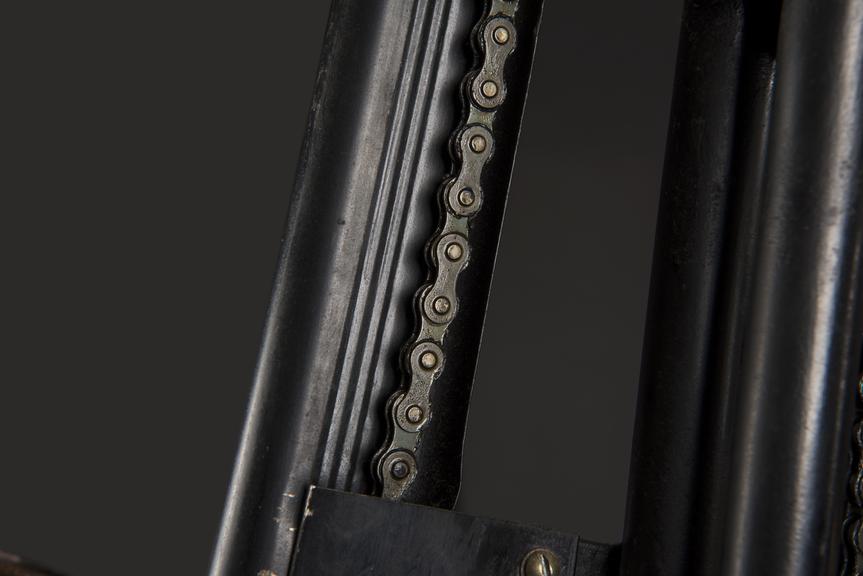
Hospital bed cycle
- Made:
- 1946 in Carshalton
- maker:
- Limited, Metal Products




























Stoke Mandeville bed cycle designed by Dr Ludwig Guttmann while working at the Stoke Mandeville Hospital and used at The Chaseley Trust for Disabled Ex-Servicemen, Eastbourne, Sussex in 1946 until 1994 by people with spinal cord injuries for both independent and assisted exercise
Ludwig Guttmann was a Jewish neurosurgeon who left Nazi Germany with his family in 1939. He became director of the Spinal Unit at Stoke Mandeville Hospital in Aylesbury in 1944. Five years later Guttmann established The Chasley Trust.
How does this object link Second World War servicemen with the Paralympic Games? Beds like this were part of an exercise regime for war veterans with spinal injuries at Stoke Mandeville Hospital, whose 9th annual Games were considered to be the first Paralympics.
How was it used? The metal bar would be placed over your bed and you’d push the pedals with your hands, building muscle in your arms and upper body. Once stronger, you’d be able to use a wheelchair, and take part in games such as darts or snooker.
On the first day of the 1948 Summer Olympics in London, sixteen ex-servicemen took to the Hospital lawn in Aylesbury to compete in the first ever Stoke Mandeville Games. It was organised by Dr Ludwig Guttmann, who had set up the specialist Spinal Injuries Unit in 1944. What was his aim? He firmly believed in the benefits of exercise for both physical and psychological rehabilitation.
Competitors from all over Europe became involved in the annual Games. Guttmann and the Stoke Mandeville team were among four hundred athletes from 23 countries at the 9th Games, when the Paralympics was formally launched in Rome in 1960. So the bed cycle really was the first step to becoming an athlete.
Look closer
The Hospital Bed CycleDetails
- Category:
- Therapeutics
- Object Number:
- 1999-223
- Measurements:
-
overall (frame): 1820 mm x 2180 mm x 900 mm, 123 kg
- type:
- bed cycle
- credit:
- The Chaseley Trust




